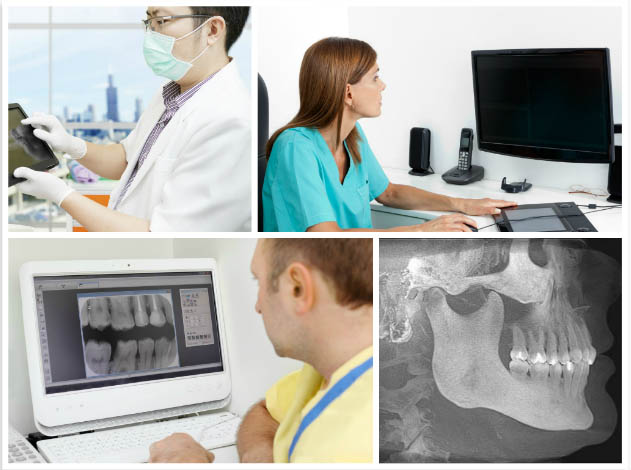Orthodontic Imaging Software
As you may know, orthodontic imaging software is one of the best tools for electronically creating, storing, and accessing digital radiographs. As more and more medical professionals turn to digital radiographs for the convenience, cost, and ease, orthodontic imaging software provides them the tools they need to access and share electronic radiographs. Orthodontic imaging software is convenient, easy to implement, and cost effective, making it an ideal software to add to your office’s suite of tools.
How does orthodontic imaging software work?
After taking a digital radiograph, orthodontic imaging software provides you with an interface to to view, edit, send, and sync x-rays and other patient information. It is an easy way to keep everyone up to date with patient records, diagnosis, analysis, and progress. Often, orthodontic imaging software uses a comprehensive control panel that you can integrate with the other software your office uses to easily access and share records and images.
Why use orthodontic imaging software?
Rather than going through the tedious process of faxing x-ray images from one office to another or searching for a physical file in huge storage cabinets, digital images make it easy to pull up and send patient files online. Orthodontic imaging software simplifies the process of accessing digital images so you can access and manage images through the web when you need to, no matter where you are. Additionally, orthodontic imaging software ensures everyone is on the same page, because patient data is stored and accessed online rather than in paper files that can easily get mixed up or lost.
Many dentists and orthodontists are realizing that their old ways are outdated and integrating the tools of the future gets you ahead of the competition while making life easier for your practice. It’s important to stay ahead when patient records are on the line, and going digital allows you to provide patients with the quick, accurate service they expect. As a medical service provider, you want to provide your patients with the best services available, and orthodontic imaging software is one way to make work easier for you and service better for the patient at the same time.

 Today, imaging technologies can give doctors extremely good understanding into structures that aren’t visible to the naked eye. Cephalometrics uses special imaging techniques to gain precise information about a patient’s skeletal and dental structures. Unlike other imaging techniques, cephalometric imaging gives information about the bony structures as well as the soft tissues, which together offers insight into how the many different parts of the skull interact. Cephalometric imaging is prized by orthodontists, dentists, and other medical professionals for its detailed accuracy. For this reason, it is a very helpful tool in treatment planning.
Today, imaging technologies can give doctors extremely good understanding into structures that aren’t visible to the naked eye. Cephalometrics uses special imaging techniques to gain precise information about a patient’s skeletal and dental structures. Unlike other imaging techniques, cephalometric imaging gives information about the bony structures as well as the soft tissues, which together offers insight into how the many different parts of the skull interact. Cephalometric imaging is prized by orthodontists, dentists, and other medical professionals for its detailed accuracy. For this reason, it is a very helpful tool in treatment planning.


